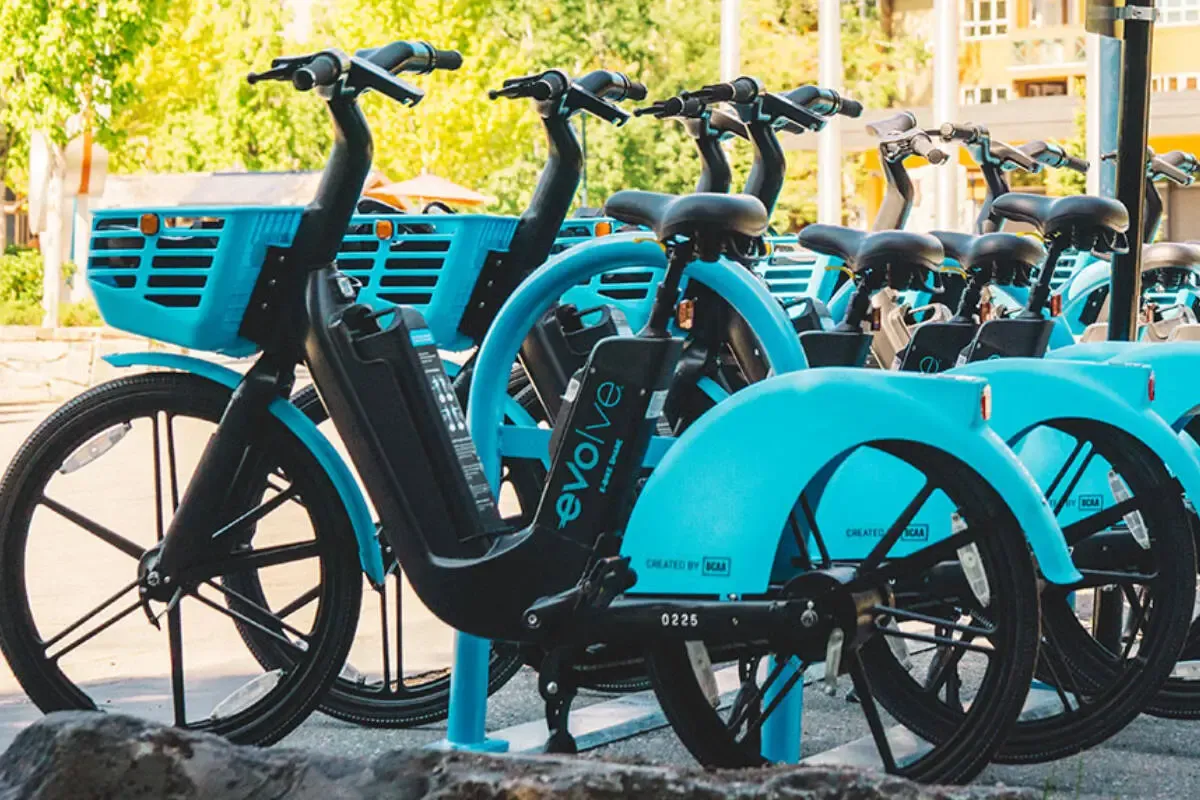There is a European Union vehicle category for four-wheeled vehicles which are not technically cars. These are called “quadricycles”. The framework was developed in 2002 and further stipulates Light (L6e) or Heavy (L7e) categories. Curiously, these vehicles are covered by the same rules as mopeds(!)
Since they are all treated as mopeds, these vehicles comply with:
- Maximum continuous rated power ≤ 4 kW (L7e maximum net engine power ≤ 15 kW)
- Maximum design vehicle speed of 45 km/h
- L6e unladen mass ≤ 425 kg (excluding batteries), L7e unladen mass ≤ 450 kg
- Vehicles must have number plates (license plates.)
- Drivers must be licensed and insured though the moped license is closer to "road safety certificate" category of drivers license, which is available to people as young as 14. These will vary by country.
Which brings me to the Geneva Auto show.

It was here that Citroën introduced the Ami One. It's a concept electric city car that Citroën says evokes the spirit of the iconic 2CV, and it can be driven by anyone ages 14 and up. It’s also limited to 45 km/h, weighs 450 kg and you “don’t need a driver’s license” to use it.
Sounds familiar?
The Renault Twizy also weighs 450 kg, has a 4kW motor and a maximum speed of 45 km/h.
Yup, both the Twizy and the Ami One concept are quadricycles. The constrained power, speed and licensing requirements means that the vehicles can be much lighter. The smaller size makes them very maneuverable and easily parked in cities—at 2.5m long, it parks perpendicular in parallel parking spots. The constrained application means that their range of 100km (62 mi.) is perfectly adequate. Fewer batteries means less weight and less cost. All this added lightness means that quadricycles can be far cheaper.
The Ami One takes cost reduction to remarkable lengths, with fewer unique parts, a simple dashboard, seats and materials all around. No “entertainment system” except a bluetooth speaker, no “navigation” when you have a smartphone and an appropriate mount for it. The lock is a QR code and all the body panels are symmetric and can be interchanged.
So the Ami One is not a breakthrough idea but pushes the design envelope a bit in cost. The Twizy has been around since 2012 and it’s not even the first electric quad.
But the really bad news for the Ami One is that quads are not selling well. The Twizy has been in production since 2012 and has only achieved total cumulative sales of 21,874 so far. Half of those sales were within the first 18 months or so. It’s a very poor showing for a “low-end” people’s car or pretender to the name.
The following graph shows the sales level for quadricycles relative to mopeds, motorcycles, and e-bikes.

What’s going on?
My impression is that quads appear to be undesirable because pricing is near the low-end of the car market. For a little more money one can buy a “real car”. For less money you can buy a great used car. Yes, the “real car” has higher tax, requires a driver’s license, has higher fuel costs, insurance and parking requirements. But the psychological barrier is there: initial pricing. And anyway you don’t look like an impoverished teenager driving one.
One possible ray of hope is that Citroën suggests is that the Ami is designed to be used as a fleet not personal vehicle. In other words, it’s designed to be a service not a product.
This is hopeful because what the e-scooter market showed is that micro vehicles are far more popular as shared vehicles than as personal vehicles.
Let’s dig into this a bit.
You can see this as a dichotomy:
Micromobility / Service [vs] Automobility / Product
Micromobility is minimalist mobility and as such it implies sharing—ownership is complexity.
Automobility is maximalist mobility and it implies ownership—sharing is the wrong signal.
A product designed to be owned is aimed squarely at the ego. Its design is driven by psychology more than utility because we hired it to tell the world about us as much as to help us. We can signal virtue, status, power or whatever we fancy.
A product designed to be shared is aimed squarely at utility and function. It is not “reflective of who we are”.
What micromobility shows is that once a vehicle is small, light, cheap and “conforming” it can be a service. Once it’s a service it is far more likely to be popular. Even wildly popular. The same product in private ownerships is a complete failure.
So if micromobility is productized it tends to fail and if automobility is servitized it tends to fail.
Nobody wants to own a minimalist spartan product (because it tells the world we are cheap and tasteless) and nobody offering a service wants to operate a glorified ego-boosting fragile-mobile (because it’s financially unsound.)
So if the Ami One is put into production and offered for sale through dealership channels it won’t recover its investment. If the Ami One is put into production and offered as a shared service with the right operating model it might end up a celebrated icon as much as the 2CV was in its epoch—a time when we were underserved by personal vehicles.

.svg)
%2Bcopy.jpeg)


.svg)












